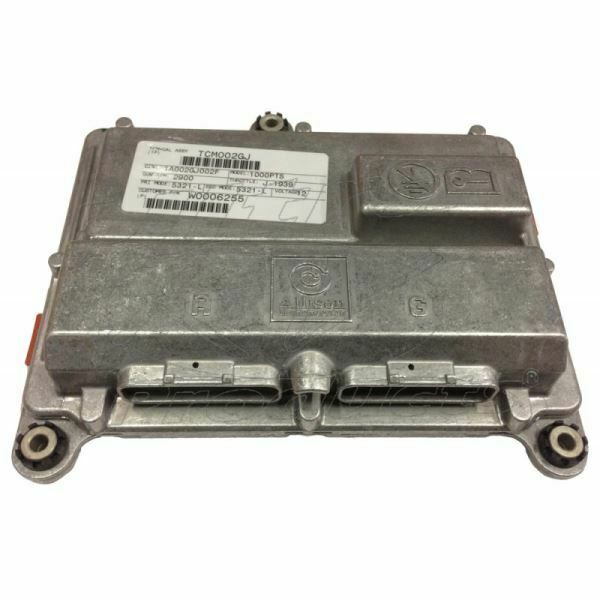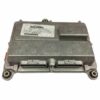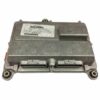Restore Dependable Shifting to Your GM HD Truck
Is your Silverado or Sierra 2500/3500 letting you down with harsh shifts, getting stuck in gear, or an illuminated check engine light? A failing Transmission Control Module (TCM) can bring your hard-working truck to a grinding halt, costing you time and money. This isn’t just an inconvenience; it’s a reliability issue that compromises your ability to tow, haul, and get the job done. Get back the crisp, predictable performance you depend on with this direct-fit, pre-programmed Allison TCM.
Common Symptoms of a Failing Allison TCM & Your Direct-Fit Solution
A faulty TCM can manifest in several ways, often triggering Diagnostic Trouble Codes (DTCs) like P0700 (Transmission Control System Malfunction) or U0101 (Lost Communication with TCM). If you’re experiencing any of the following, it’s a strong indicator that your module needs replacement:
- Erratic or harsh shifting between gears
- The transmission getting stuck in one gear (limp mode)
- Delayed engagement when shifting into Drive or Reverse
- No communication with the TCM via a diagnostic scan tool
- Check Engine Light or other transmission-related warning lights on the dash
This module is the definitive solution, engineered to restore your transmission’s electronic brain. We use your vehicle’s VIN to flash the unit with the latest official GM software updates before it ships, ensuring it works perfectly with your truck’s specific configuration. This is the most reliable way to solve those frustrating transmission issues and restore factory performance. The core of your work truck’s powertrain deserves a solid fix, and our 2001-2005 Silverado Sierra 2500 3500 Allison TCM is the answer.
Features & Benefits
- ✔ Arrives Programmed to Your VIN: No expensive trips to the dealer or programmer needed. This module is ready for installation right out of the box, saving you hundreds in labor and diagnostic fees.
- ✔ Loaded with the Latest GM Software: We flash each unit with the most current calibrations from General Motors, which often include fixes for common shift quality issues and improved performance logic.
- ✔ Restores Crisp, Reliable Shifting: Eliminate harsh engagements and unpredictable gear changes. Restore the smooth, confident performance your Allison transmission is known for, especially under load.
- ✔ Direct-Fit OE Replacement: Guaranteed compatibility with all service numbers listed, including 29537441, 15768288, and 09385220. It mounts in the factory location (LH fan shroud) for a no-hassle installation.
- ✔ This unit is backed by our one-year replacement warranty.
An Expert’s Note on Programming
As a technician, I’ve seen countless truck owners try to save a few dollars by installing a used TCM from a salvage yard. They quickly discover the truck won’t start or shift because the module is still programmed to the donor vehicle’s VIN and options. The Allison transmission is a sophisticated piece of equipment that requires precise electronic commands. Our pre-programming service isn’t just a convenience—it’s the critical step that makes this a true, effective repair. We handle the complex part so you can focus on the simple installation.
Don’t settle for a truck that you can’t rely on. By installing a properly programmed 2001-2005 Silverado Sierra 2500 3500 Allison TCM, you are investing in the long-term health and dependability of your vehicle. Get your heavy-duty truck back on the road and back to work with confidence.
Frequently Asked Questions
How do I provide my vehicle’s VIN?
After you complete your purchase, you will need to send us your 17-digit Vehicle Identification Number (VIN). You can typically add this as a note during checkout or send it to us in a message referencing your order number. We cannot ship the module until we have your VIN to program it.
Is this a simple plug-and-play installation?
Yes, for most vehicles. Because we program the module to your VIN before shipping, the installation process involves disconnecting the battery, swapping the old module with the new one, and reconnecting the battery. There are no additional programming steps required on your end.
Will this fix my specific shifting problem?
This module corrects issues directly caused by a faulty TCM. While it resolves the most common electronic transmission problems for these trucks, we always recommend a proper diagnosis by a qualified mechanic to rule out mechanical issues within the transmission itself.
What if my original part number isn’t on the list?
The part numbers provided cover the vast majority of modules for these years. If your number is not listed, please contact us with your VIN. We can verify compatibility and ensure you receive the correct, pre-programmed 2001-2005 Silverado Sierra 2500 3500 Allison TCM for your truck.
Do I need to perform a transmission relearn procedure after installation?
While the unit is programmed and ready to go, some vehicles benefit from a transmission adaptive pressure relearn procedure to ensure the quickest return to optimal shift quality. However, in most cases, the transmission will relearn on its own over the first 50-100 miles of mixed driving.


